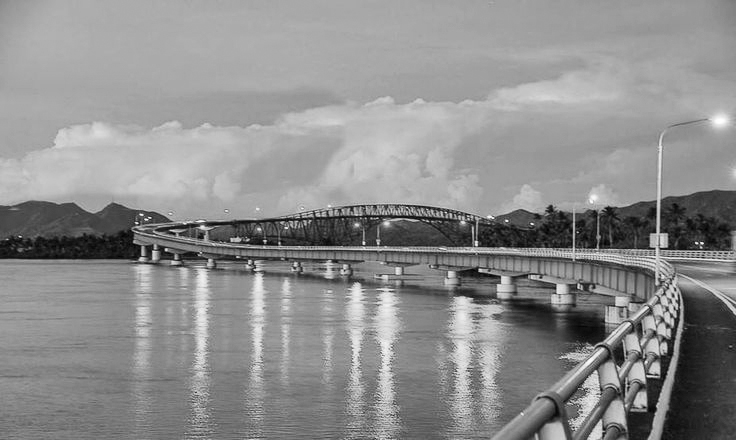
TACLOBAN CITY – In an urgent move to preserve the structural integrity of the iconic San Juanico Bridge, authorities have imposed stricter weight limits, now allowing only light vehicles with a maximum axle load of three metric tons to pass.
The Office of Civil Defense (OCD) confirmed that the new restrictions take effect immediately as part of heightened safety protocols following concerns about the bridge’s ability to handle excessive loads. Vehicles crossing the bridge must travel along the centerline and do so one at a time, strictly adhering to the instructions of on-site traffic management personnel.
The 2.16-kilometer San Juanico Bridge, one of the longest bridges in the Philippines connecting the islands of Samar and Leyte, is a vital transport link in Eastern Visayas. However, its aging structure has prompted increased caution from national and regional authorities.
Heavy vehicles—including commercial cargo trucks, large buses, and trailers—are temporarily barred from using the bridge until further evaluation ensures that such loads will not compromise its stability.
President Ferdinand Marcos Jr. has directed the use of alternative transport routes via Roll-On/Roll-Off (RoRo) vessels to minimize disruptions in the flow of goods and passengers. Suggested alternatives include the Catbalogan City–Tacloban City and Calbayog City–Tacloban City ferry routes, which are expected to accommodate diverted cargo and public transport.
The Department of Public Works and Highways (DPWH) and the OCD are currently conducting further assessments and are exploring long-term solutions to upgrade or reinforce the bridge. Motorists are urged to cooperate with the new regulations and remain updated through official government advisories.
The San Juanico Bridge, inaugurated in 1973, remains a symbol of regional connectivity and development. Authorities emphasized that protecting it now is critical to maintaining the safety and economy of Eastern Visayas.
(LIZBETH ANN A. ABELLA)



